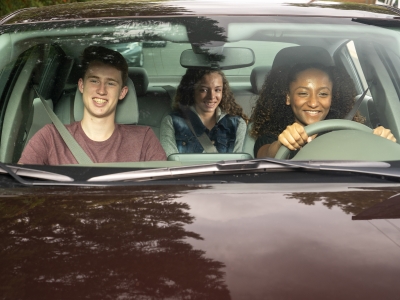April and May are big months for teens. Prom season, graduation season, the kick-off of summer vacation--there is so much excitement in the air! One of the perks of being an older teen is having the privilege of getting to drive yourself instead of relying on the adults in your life to drive you around. While it’s a great feeling to be independent, there’s a lot of responsibility that comes along with getting behind the wheel.

We want everyone to have a safe and healthy end of the school year and start of summer. Here are some tips for parents and teens to keep in mind this season:
1. Buckle Up!
This one’s obvious, but important. Everyone in the car needs to be buckled up safely and correctly. It’s not enough just to wear the lap belt or to rely on airbags in case of an emergency. The car should never be in motion until everyone inside of it is properly secured.
2. Plan Ahead.
Take the time to plan your route before getting on the road. Talk about what to do in the event of construction or road closures, and make a plan for how to handle emergency situations like a flat tire. Keep a close eye on the weather. If adverse weather is in the forecast, it might be best if an experienced adult did the driving instead.
3. Set Clear Expectations.
Agree on a plan for a safe ride home before going to any celebration. This could involve having a designated driver (someone who is not drinking), calling a parent or rideshare service, or arranging to stay overnight at a friend’s place. Parents should talk to their teens about the importance of not getting into a car with someone who has been drinking. Let them know they can always call you, no matter what time it is, for a safe ride home.
4. Put the Phone Down.
Never use a phone while driving (not even hands-free is distraction-free). As a parent, do not expect your teen to answer calls or texts while they are driving. Most phones have an option to auto-reply to calls or texts while in driving mode. This is a great option for worried parents who expect a text back from their teen immediately.
5. Be Prepared for Unfamiliar Locations.
If prom or graduation is being held at a new location, teens should familiarize themselves with the area beforehand. Look up directions and parking information. Parents can help by driving their teen to the venue during the day so they can get a feel for the layout and parking situation.
This time of year is full of exciting milestones for teens, and we want them to celebrate safely. By using these tips, we can all celebrate this thrilling time of year safely.
Interested in learning more about traffic safety?
Are you looking for defensive driving and traffic school courses? Do you want a discount on your auto insurance? Do you know a teen who’s ready to take an online driver education course?
Safe2Drive is here to help! We offer convenient online courses for drivers of any age! Visit our website today to learn about the online courses we offer in your state.